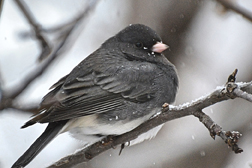
Dear EarthTalk: My husband thinks it’s better for the planet to hand-wash dishes in the sink, but it seems to me using the dishwasher is more eco-friendly. Can you settle this debate for us? ~ Chris B., Bowie, MD
Hands-down, the dishwasher is the way to go, not only from the standpoint of water waste and energy use but also to preserve your own sanity. Who needs to be scrubbing, rinsing and drying dishes all day when an efficient machine can do the work? Modern dishwashers use much less water and energy than their forebears, so you can clean up after your meals and snacks quickly and without guilt just by filling up the dishwasher and hitting the “start” button.

It’s not surprising that many of us still think hand-washing is better, given that the dishwashers of yesteryear used 10-15 gallons of water per cycle. But dishwashers sold today in the United States can only use a maximum of five gallons per cycle per the mandate of the U.S. Department of Energy. And to qualify for one of the federal government’s EnergySTAR labels identifying especially efficient appliances, dishwashers must max out their water use at 3.5 gallons per cycle.
Meanwhile, handwashing the same number of dishes, pots and pans as you can fit in the dishwasher typically “consumes” some 27 gallons of water, according to a study by researchers at Germany’s University of Bonn. (They also found that some people can handwash a load of dishes with as little as 8.7 gallons of water while others use as many as 116 gallons!)
“The average kitchen faucet has a flow rate of 2.2 gallons per minute, meaning that you’d only have two minutes to wash an entire dishwasher’s worth of dishes to match a dishwasher’s water efficiency,” reports Savannah Sher on BobVila.com. “It would be nearly impossible to use less than five gallons of water to hand wash a full load of dishes.”
And if you’re going to use the dishwasher anyway, save yourself even more hot water by skipping the sink pre-rinse and just loading those dirty dishes right into the bottom rack.
“Scrape big chunks of leftover food into the trash, but pre-rinsing isn’t necessary with modern dishwashers because they have sensors that adjust the wash cycle based on how dirty the dishes are,” says Consumer Reports’ Perry Santanachote. In fact, unnecessary pre-rinsing can waste about 6,000 gallons of water per household per year.
These efficiency gains only apply to running your dishwasher when it’s full. Rather than running the dishwasher with a half-load, wait until it fills up before hitting start. (Some units have a “rinse and hold” feature that pre-rinses what’s in there so it’s easier to clean when it does fill up later.) Of course, some items—cutting boards, silver flatware, cast iron cookware, non-stick pans—will still require handwashing, but you can always try to minimize your use of them accordingly.
CONTACTS: A European Comparison of Cleaning Dishes by Hand, https://www.tempurl4.uni-bonn.de/forschung/haushaltstechnik/publikationen/eedal-manualdishwashing-ht1; Dishwasher vs. Hand Washing: When to Use Each Cleaning Method, https://www.bobvila.com/articles/dishwasher-vs-hand-washing/; 9 Tricks That Save Tons of Water, https://www.nrdc.org/stories/9-tricks-save-tons-water.
Dear EarthTalk: Is it true that some wildlife species are evolving much more rapidly in response to the warming climate? ~ D. Gould, Hendersonville, NC
It’s amazing to think that climate change is causing animals to evolve faster than they would otherwise, but the science speaks for itself. Researchers from Australia’s Deakin University found evidence of so-called “shapeshifting” in recent years in direct response to warming temperatures across habitat ranges.

Indeed, several species of Australian parrots have four-to-10 percent bigger bills than their ancestors before the industrial revolution, correlating directly with rising temperatures due to human-induced global warming. Dark-eyed juncos in North America also evolved bigger bills as temperature extremes ramped up across their range. Mammalian shapeshifting also includes longer tails in wood mice and increased leg and tail sizes in masked shrews over the 150 years—all likely adaptations to warming habitats.
Another study found that climate change has sped up the rate of natural selection for mosquitos that lay their eggs inside carnivorous pitcher plants. Mosquito larvae that hatch in the spring have adapted to an earlier spring by opening sooner than they did a quarter-century ago to feed on more dead insects.
While these types of adaptations may benefit the species under study, climate change is likely negatively affecting many more which cannot adapt fast enough to keep up. For example, Scotland’s feral sheep have become smaller due to warmer weather in the winter that no longer necessitates larger, thicker coats. And polar bears, which have evolved thick fur coats and layers and layers of fat to keep them warm out on the Arctic tundra and swimming between ice floes, are likely another evolutionary loser in the age of climate change. As ice caps melt and ice floes become fewer and farther between, these majestic white guardians of the Arctic are unlikely to adapt quickly enough to keep up with the fast-moving changes to their environment and are thus likely headed for extinction unless we can turn things around ASAP.
According to the Intergovernmental Panel on Climate Change, a quarter of all species may face extinction as a result of global warming, an estimate based on studies on the range of species and whether a species has adapted to new conditions of temperature, rainfall and more. Researchers then projected future ranges of to determine whether the range will shift faster than a species can move and adapt. Species that fail to adapt quickly enough will be trapped in degrading habitat and as such are much more likely to go extinct.
While warming temperatures increased gene flow and evolution among some species during the Pleistocene era, the current reality of climate change paints a different picture. “The present human-caused climate change will not lead to similar extensive mixing and adaptation of populations,” says Eeva Furman of the Finnish Environment Institute. “Partly because movements of most species are greatly hindered in human dominated landscapes, and partly because the present climate warming is extremely rapid in comparison with Pleistocene climate fluctuations.”
CONTACTS: Shape-shifting: changing animal morphologies as a response to climatic warming, bit.ly/shapeshifting-wildlife; Climate Change Could Change Rates of Evolution, journals.plos.org/plosbiology/article?id=10.1371/journal.pbio.1001015; Climate change is speeding up evolution, mice study finds, cantechletter.com/2017/11/climate-change-is-speeding-up-evolution-mice-study-finds/; First Comes Global Warming, Then an Evolutionary Explosion, https://e360.yale.edu/features/first_comes_global_warming_then_an_evolutionary_explosion.
Dear EarthTalk: How is Artificial Intelligence being used for conservation? ~ Katy P., Chevy Chase, MD

You would never think that computers and Artificial Intelligence (AI) could help humans save nature, but in fact these tools may be key to whether or not we can halt global warming in time let alone solve many other vexing environmental problems. For many underfunded conservation groups, hiring enough staff can become too costly. Humans are also prone to making more sloppy errors and inaccuracies in calculations. AI can serve as a more efficient, reliable and affordable way to capture and analyze information for conservation purposes.
AI tools are extremely precise in the more statistical and analytical elements of conservation, whether it’s detecting complex patterns or making mathematical calculations. For example, interactions between predators and prey can be modeled using game theory with AI tools. Analytics—with the help of machines—can then calculate where predators are most likely to strike and predict where prey will roam.
Certain problems also require real-time results that people cannot produce in a timely manner, such as tracking the locations of illegal wildlife traffickers to protect endangered wildlife. AI tools can produce results effectively without distraction and not experience any performance deterioration due to fatigue.
While some may be concerned that AI requires advanced software engineers to manage, it is actually now more accessible than ever. As long as the AI software to conduct conservation research tasks is set up correctly, researchers believe that anyone can easily utilize it with point-and-click tools.
Of course, AI is not a simple solution. Researchers predict that the training data required for AI machines to generate results can range up to hundreds of thousands of examples and details. Though AI can process data at much higher rates than humans, humans still have to monitor it to ensure accuracy.
For example, AI software processing images or audio recordings can produce false positives that will require trained analysts to remove manually. In spite of this disadvantage, scientists do not believe that the AI program always has to be perfectly accurate. “We just have to know exactly how accurate it is,” says conservation biologist Marc Travers.
Although the future of AI in environmental conservation appears promising, it cannot completely replace humans. The modern climate crisis is truly a crisis of lifestyle, with which mankind has turned nature into its very own factory. To heal that split and mold a harmonic, mutually beneficial balance between nature and mankind, humans need to be in the thick of it. Like Peter Ersts, a software developer at the American Museum of Natural History’s Center for Biodiversity and Conservation, says, “We can’t fully replace people yet, and nor should we.”
CONTACTS: AI for Conservation, teamcore.seas.harvard.edu/ai-conservation; AI empowers conservation biology, nature.com/articles/d41586-019-00746-1.
EarthTalk® is produced by Roddy Scheer & Doug Moss for the 501(c)3 nonprofit EarthTalk. See more at https://emagazine.com. To donate, visit https//earthtalk.org. Send questions to: question@earthtalk.org.

